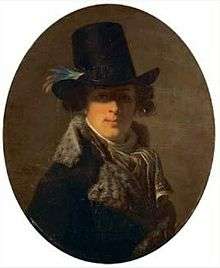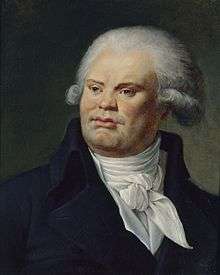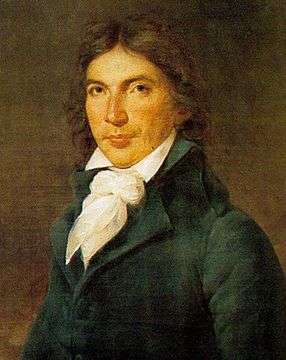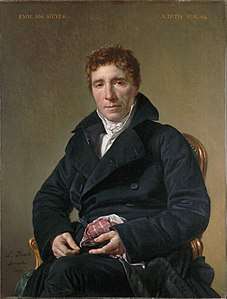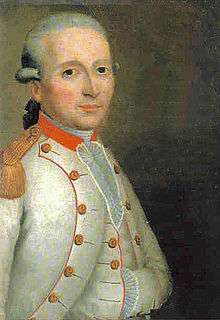Committee of Public Safety
The Committee of Public Safety (French: Comité de salut public), created in April 1793 by the National Convention and then restructured in July 1793, formed the provisional government in France during the Reign of Terror (1793–1794), a phase of the French Revolution. The Committee of Public Safety succeeded the previous Committee of General Defence (established in January 1793) and assumed its role of protecting the new republic against foreign attacks and internal rebellion. As a wartime measure, the committee was given broad supervisory powers over the armed forces, judiciary and legislature. It was formed as an administrative body to supervise and expedite the work of the executive bodies of the convention and of the government ministers appointed by the convention.

As the committee tried to meet the dangers of a coalition of European nations and counter-revolutionary forces within the country, it became more and more powerful. The power of the committee peaked between August 1793 and July 1794, during which it gained dictatorial powers and organised the Reign of Terror. In December 1793, the convention formally conferred executive power upon the committee. Among the members, the radical Jacobin Maximilien Robespierre emerged as a leader. After the killing of the rival factions of Hébertists and Dantonists, sentiments in the convention eventually turned on Robespierre, who was killed in July 1794. In the following Thermidorian Reaction – named after the month of Thermidor in the French Republican calendar – the committee's influence diminished and it was abolished in 1795.[1]
Origins and evolution
Committee of discussion

On 5 April 1793, the French military commander and former minister of war General Charles François Dumouriez defected to Austria following the publication of an incendiary letter in which he threatened to march his army on the city of Paris if the National Convention did not accede to his leadership. News of his defection caused alarm in Paris, where imminent defeat by the Austrians and their allies was feared. A widespread belief held that revolutionary France was in immediate peril, threatened not only by foreign armies and by recent revolts in the Vendée, but also by foreign agents who plotted the destruction of the nation from within.[2] Dumouriez's defection lent greater credence to this belief. In light of this threat, the Girondin leader Maximin Isnard proposed the creation of a nine-member Committee of Public Safety. Isnard was supported in this effort by Georges Danton, who declared: "This Committee is precisely what we want, a hand to grasp the weapon of the Revolutionary Tribunal".[2]
The Committee was created on 6 April 1793. Closely associated with the leadership of Danton, it was initially known as the Danton Committee.[3] Danton steered the Committee through the 31 May and 2 June 1793 journées that saw the violent expulsion of the Girondins and through the intensifying war in the Vendée. When the Committee was recomposed on 10 July 1793, Danton was not included. Nevertheless, he continued to support the centralization of power by the Committee.[4]
On 27 July 1793, Maximilien Robespierre was elected to the Committee. At this time, the Committee was entering a more powerful and active phase, which would see it become a dictatorship alongside its powerful partner, the Committee of General Security. The role of the Committee of Public Safety included the governance of the war (including the appointment of generals), the appointing of judges and juries for the Revolutionary Tribunal,[5] the provisioning of the armies and the public, the maintenance of public order and oversight of the state bureaucracy.[6]
The Committee was also responsible for interpreting and applying the decrees of the National Convention and thus for implementing some of the most stringent policies of the Terror — for instance, the levée en masse passed on 23 August 1793, the Law of Suspects passed on 17 September 1793 and the Law of the Maximum passed on 29 September 1793. The broad and centralized powers of the Committee were codified by the Law of 14 Frimaire (also known as the Law of Revolutionary Government) on 4 December 1793.
Execution of the Hébertists and Dantonists
On 5 December 1793, journalist Camille Desmoulins began publishing Le Vieux Cordelier, a newspaper initially aimed (with the approval of Robespierre and the Committee of Public Safety)[7] at the ultrarevolutionary Hébertist faction, whose extremist demands, anti-religious fervor and propensity for sudden insurrections were problematic for the Committee. However, Desmoulins quickly turned his pen against the Committee of Public Safety and the Committee of General Security, comparing their reign to that of the Roman tyrants chronicled by Tacitus and expounding the indulgent views of the Dantonist faction.
Consequently, though the Hébertists were arrested and executed in March 1794, the Committee of Public Safety and the Committee of General Security ensured that Desmoulins and Danton were also arrested. Hérault de Séchelles, a friend and ally of Danton, was expelled from the Committee of Public Safety, arrested and tried alongside them. On 5 April 1794, the Dantonists went to the guillotine.[8]
Committee of rule
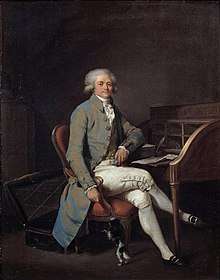
The elimination of the Hébertists and the Dantonists made evident the strength of the committees as had their ability to control and silence opposition. The creation in March 1794 of a General Police Bureau — reporting nominally to the Committee of Public Safety, but more often directly to Robespierre and his closest ally, Louis Antoine de Saint-Just — served to increase the power of the Committee of Public Safety and of Robespierre himself.
The Law of 22 Prairial, proposed by the Committee of Public Safety and enacted on 10 June 1794, went further in establishing the iron control of the Revolutionary Tribunal and above it the Committees of Public Safety and General Security. The law enumerated various forms of public enemies, made mandatory their denunciation and severely limited the legal recourse available to those accused. The punishment for all crimes under the Law of 22 Prairal was death. From the initiation of this law to the fall of Robespierre on 27 July 1794, more people were condemned to death than in the entire previous history of the Revolutionary Tribunal.[9]
However, even as the Terror reached its height and with it the Committee's political power, discord was growing within the revolutionary government. Members of the Committee of General Security resented the autocratic behavior of the Committee of Public Safety and particularly the encroachment of the General Police Bureau upon their own brief.[10] Arguments within the Committee of Public Safety itself had grown so violent that it relocated its meetings to a more private room to preserve the illusion of agreement.[11] Robespierre, a fervent supporter of the theistic Cult of the Supreme Being, found himself frequently in conflict with anti-religious Committee members Collot d'Herbois and Billaud-Varenne. Moreover, Robespierre's increasingly extensive absences from the Committee due to illness (he all but ceased to attend meetings in June 1794) created the impression that he was isolated and out of touch.
Fall of the Committee and aftermath
When it became evident in mid-July 1794 that Robespierre and Saint-Just were planning to strike against their political opponents Joseph Fouché, Jean-Lambert Tallien and Marc-Guillaume Alexis Vadier (the latter two of whom were members of the Committee of General Security), the fragile truce within the government was dissolved. Saint-Just and his fellow Committee of Public Safety member Bertrand Barère attempted to keep the peace between the Committees of Public Safety and General Security. However, Robespierre delivered a speech to the National Convention on 26 July 1794 in which he emphasized the need to "purify" the Committees and "crush all factions".[12] In a speech to the Jacobin Club that night, he attacked Collot d'Herbois and Billaud-Varenne, who had refused to allow the printing and distribution of his speech to the Convention.
On the following day, 27 July 1794 (or 9 Thermidor according to the Revolutionary calendar), Saint-Just began to deliver a speech to the Convention in which he had planned to denounce Collot d'Herbois, Billaud-Varenne and other members of the Committee of Public Safety. However, he was almost immediately interrupted by Tallien and by Billaud-Varenne, who accused Saint-Just of intending to "murder the Convention".[13] Barère, Vadier and Stanislas Fréron joined the accusations against Saint-Just and Robespierre. The arrest of Robespierre, his brother Augustin and Saint-Just was ordered, along with that of their supporters, Philippe Le Bas and Georges Couthon.
A period of intense civil unrest ensued, during which the members of the Committees of Public Safety and General Security were forced to seek refuge in the Convention. The Robespierre brothers, Saint-Just, Le Bas and Couthon ensconced themselves in the Hôtel de Ville, attempting to incite an insurrection. Ultimately, faced with defeat and arrest, Le Bas committed suicide. Saint-Just, Couthon and Maximilien and Augustin Robespierre were arrested and guillotined on 28 July 1794.[14]
The ensuing period of upheaval, dubbed the Thermidorian Reaction, saw the repeal of many of the Terror's most unpopular laws and the reduction in power of the Committees of General Security and Public Safety. The Committees ceased to exist under the Constitution of the Year III (1795), which marked the beginning of the Directory.
Composition
Commission (25 March – 6 April 1793)
- Party breakdown
|
13 |
|
9 |
|
3 |
1st Committee (6 April – 10 July 1793)
- Party breakdown
|
7 |
|
2 |
2nd Committee (10 July – 5 September 1793)
- Party breakdown
|
6 |
|
3 |
- Changes
- On 27 July 1793, Gasparin was substituted by Maximilien Robespierre (Mountain).
3rd Committee (5 September 1793 – 31 July 1794)
- Party breakdown
|
10 |
|
2 |
| Member | Department | Affiliation | ||
|---|---|---|---|---|
| Bertrand Barère | Hautes-Pyrénées | Plain | ||
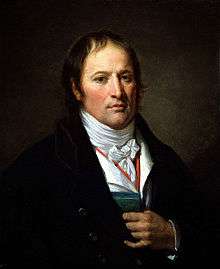 |
Jacques-Nicolas Billaud-Varenne | Seine | Mountain | |
 |
Lazare Carnot | Pas-de-Calais | Mountain | |
| Jean-Marie Collot | Seine | Mountain | ||
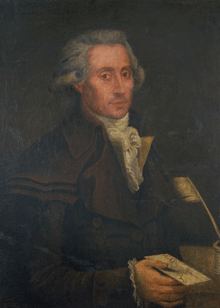 |
Georges Couthon (Before 27 July 1794) |
Puy-de-Dôme | Mountain | |
| André Jeanbon | Lot | Mountain | ||
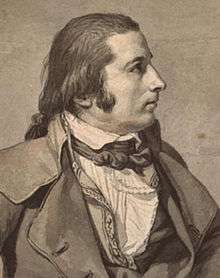 |
Robert Lindet | Eure | Plain | |
| Pierre Louis Prieur | Marne | Mountain | ||
 |
Claude-Antoine Prieur-Duvernois | Côte-d'Or | Mountain | |
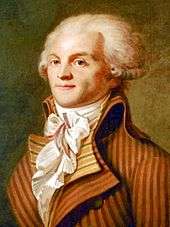 |
Maximilien Robespierre (Before 27 July 1794) |
Seine | Mountain | |
 |
Louis de Saint-Just (Before 27 July 1794) |
Aisne | Mountain | |
_02.jpg) |
Jean Hérault de Séchelles (Before 17 March 1794) |
Seine | Mountain | |
- Changes
- On 29 December 1793, Hérault de Séchelles (Mountain) was admitted to the Committee.
- On 17 March 1794, Hérault de Séchelles (Mountain) was arrested for treason, leaving his post vacant.
- On 27 July 1794, Robespierre, Saint-Just and Couthon (Mountain) were arrested and executed the following day.
- On 27 July 1794, the three were substituted by Jean-Lambert Tallien (Mountain).
4th-5th Committees (1 September – 7 November 1794)
- Party breakdown
|
11 |
|
1 |
| 5th Committee (September–October) |
6th Committee (October–November) | ||||||||
|---|---|---|---|---|---|---|---|---|---|
| Member | Department | Affiliation | Member | Department | Affiliation | ||||
| Jean-Jacques Bréard | Charente-Inférieure | Thermidorian | Renewed | ||||||
 |
Lazare Carnot | Pas-de-Calais | Thermidorian | Pierre Louis Prieur | Marne | Thermidorian | |||
| Jean-François-Bertrand Delmas | Haute-Garonne | Thermidorian | Renewed | ||||||
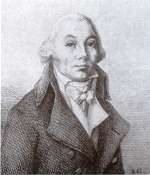 |
Joseph Eschassériaux | Charente-Inférieure | Thermidorian | Renewed | |||||
 |
Antoine François de Fourcroy | Seine | Thermidorian | Renewed | |||||
| Pierre-Antoine Laloy | Haute-Marne | Thermidorian | Renewed | ||||||
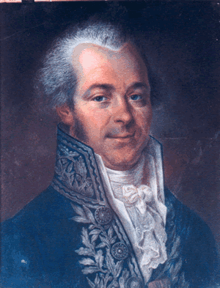 |
Charles Cochon de Lapparent | Deux-Sèvres | Thermidorian | Renewed | |||||
| Jean-Baptiste Matthieu | Oise | Thermidorian | Renewed | ||||||
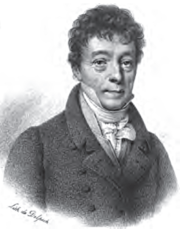 |
Philippe-Antoine Merlin | Nord | Thermidorian | Renewed | |||||
 |
Claude-Antoine Prieur-Duvernois | Côte-d'Or | Thermidorian | Louis-Bernard Guyton de Morveau | Côte-d'Or | Thermidorian | |||
.jpg) |
Jean-Baptiste Treilhard | Seine-et-Oise | Thermidorian | Renewed | |||||
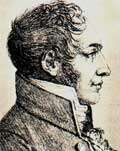 |
Jacques-Alexis Thuriot | Marne | Crest | Renewed | |||||
6th-7th Committees (7 November 1794 – 7 January 1795)
- Party breakdown
|
10 |
|
1 |
|
1 |
| 7th Committee (November–December) |
8th Committee (December–January) | ||||||||
|---|---|---|---|---|---|---|---|---|---|
| Member | Department | Affiliation | Member | Department | Affiliation | ||||
| Jean-Jacques Bréard | Charente-Inférieure | Thermidorian | Vacant | ||||||
| Jean-François-Bertrand Delmas | Haute-Garonne | Thermidorian | Renewed | ||||||
| Jean-Jacques Régis de Cambacérès | Hérault | Thermidorian | Renewed | ||||||
 |
Lazare Carnot | Pas-de-Calais | Thermidorian | Renewed | |||||
 |
Antoine François de Fourcroy | Seine | Thermidorian | Renewed | |||||
 |
Charles Cochon de Lapparent | Deux-Sèvres | Thermidorian | Vacant | |||||
| Jean-Baptiste Matthieu | Oise | Thermidorian | Renewed | ||||||
 |
Philippe-Antoine Merlin | Nord | Thermidorian | Renewed | |||||
| Louis-Bernard Guyton de Morveau | Côte-d'Or | Thermidorian | Renewed | ||||||
.jpg) |
Jean Pelet | Lozère | Conservative | Renewed | |||||
| Pierre Louis Prieur | Marne | Thermidorian | Renewed | ||||||
 |
Jacques-Alexis Thuriot | Marne | Crest | André Dumont | Somme | Thermidorian | |||
8th-9th Committees (7 January – 5 March 1795)
- Party breakdown
|
7 |
|
1 |
| 9th Committee (January–February) |
10th Committee (February–March) | ||||||||
|---|---|---|---|---|---|---|---|---|---|
| Member | Department | Affiliation | Member | Department | Affiliation | ||||
| Jean-Jacques Bréard | Charente-Inférieure | Thermidorian | Renewed | ||||||
| André Dumont | Somme | Thermidorian | Renewed | ||||||
| Jean-Jacques Régis de Cambacérès | Hérault | Thermidorian | Renewed | ||||||
 |
Lazare Carnot | Pas-de-Calais | Thermidorian | Renewed | |||||
| Vacant |  |
Antoine François de Fourcroy | Seine | Thermidorian | |||||
| Louis-Bernard Guyton de Morveau | Côte-d'Or | Thermidorian | Jean-Baptiste Matthieu | Oise | Thermidorian | ||||
.jpg) |
Jean Pelet | Lozère | Conservative | Renewed | |||||
| Pierre Louis Prieur | Marne | Thermidorian |  |
Philippe-Antoine Merlin | Nord | Thermidorian | |||
10th-11th Committees (5 March – 5 May 1795)
- Party breakdown
|
5 |
|
1 |
| 11th Committee (March–April) |
12th Committee (April–May) | ||||||||
|---|---|---|---|---|---|---|---|---|---|
| Member | Department | Affiliation | Member | Department | Affiliation | ||||
| Jean-Jacques Bréard | Charente-Inférieure | Thermidorian | Renewed | ||||||
| André Dumont | Somme | Thermidorian | Denis Toussaint Lesage | Eure-et-Loir | Thermidorian | ||||
| Jean-Jacques Régis de Cambacérès | Hérault | Thermidorian | Renewed | ||||||
 |
Antoine François de Fourcroy | Seine | Thermidorian | Renewed | |||||
| Jean-Baptiste Matthieu | Oise | Thermidorian | Renewed | ||||||
 |
Philippe-Antoine Merlin | Nord | Thermidorian | Renewed | |||||
| Vacant | Jacques Antoine Creuzé-Latouche | Vienne | Conservative | ||||||
12th Committee (3 June – 27 October 1795)
- Party breakdown
|
3 |
|
2 |
| Member | Department | Affiliation | ||
|---|---|---|---|---|
| Jean-Jacques Régis de Cambacérès | Hérault | Thermidorian | ||
| Pierre Henry-Larivière | Calvados | Conservative | ||
| Louis-Marie de La Révellière | Maine-et-Loire | Conservative | ||
| Denis Toussaint Lesage | Eure-et-Loir | Thermidorian | ||
 |
Philippe-Antoine Merlin | Nord | Thermidorian | |
Use of the term during the Algerian War
During the May 1958 crisis in France, an army junta under General Jacques Massu seized power in Algiers on the night of 13 May 1958 and General Salan assumed leadership of a body calling itself the Committee of Public Safety.
See also
Notes
- "Committee of Public Safety". Encyclopedia Britannica. Retrieved 20 September 2017.
- Belloc (1899), p. 210.
- Mantel (2009).
- Belloc (1899), p. 235.
- Scurr (2006), p. 284.
- Furet (1992), p. 134.
- Furet (1992), p. 141.
- "Danton Versus Robespierre: The Quest for Revolutionary Power". ucumberlands.edu. Archived from the original on 8 September 2017. Retrieved 20 September 2017.
- Scurr (2006), p. 328.
- Scurr (2006), p. 331.
- Scurr (2006), p. 340.
- Madelin (1916), p. 418.
- Madelin (1916), p. 422.
- "Maximilien Robespierre, Master of the Terror". loyno.edu. Retrieved 20 September 2017.
References
| Wikimedia Commons has media related to Committee of Public Safety. |
- Belloc, Hillaire (1899). Danton: A Study. New York: Charles Scribner's Sons.CS1 maint: ref=harv (link)
- Furet, François (1992). Revolutionary France, 1770–1880. Oxford: Blackwell Publishing.CS1 maint: ref=harv (link)
- Linton, Marisa (2013). Choosing Terror: Virtue, Friendship and Authenticity in the French Revolution. Oxford University Press.
- Madelin, Louis (1916). The French Revolution. New York: G.P. Putnam's Sons.CS1 maint: ref=harv (link)
- Mantel, Hilary (6 August 2009). "He Roared". London Review of Books. 3 (15): 3–6. Retrieved 16 January 2010.CS1 maint: ref=harv (link)
- Palmer, R. R. (September 1941). "Fifty Years of the Committee of Public Safety". Journal of Modern History. 13 (3): 375–397. JSTOR 1871581.CS1 maint: ref=harv (link)
- ——— (1970). Twelve Who Ruled: The Year of the Terror in the French Revolution. Princeton: Princeton University Press. ISBN 0-691-05119-4.CS1 maint: ref=harv (link)
- Schama, Simon (1989). Citizens: A Chronicle of the French Revolution. New York: Alfred A. Knopf.CS1 maint: ref=harv (link)
- Scurr, Ruth (2006). Fatal Purity: Robespierre and the French Revolution. New York: Owl Books.CS1 maint: ref=harv (link)
